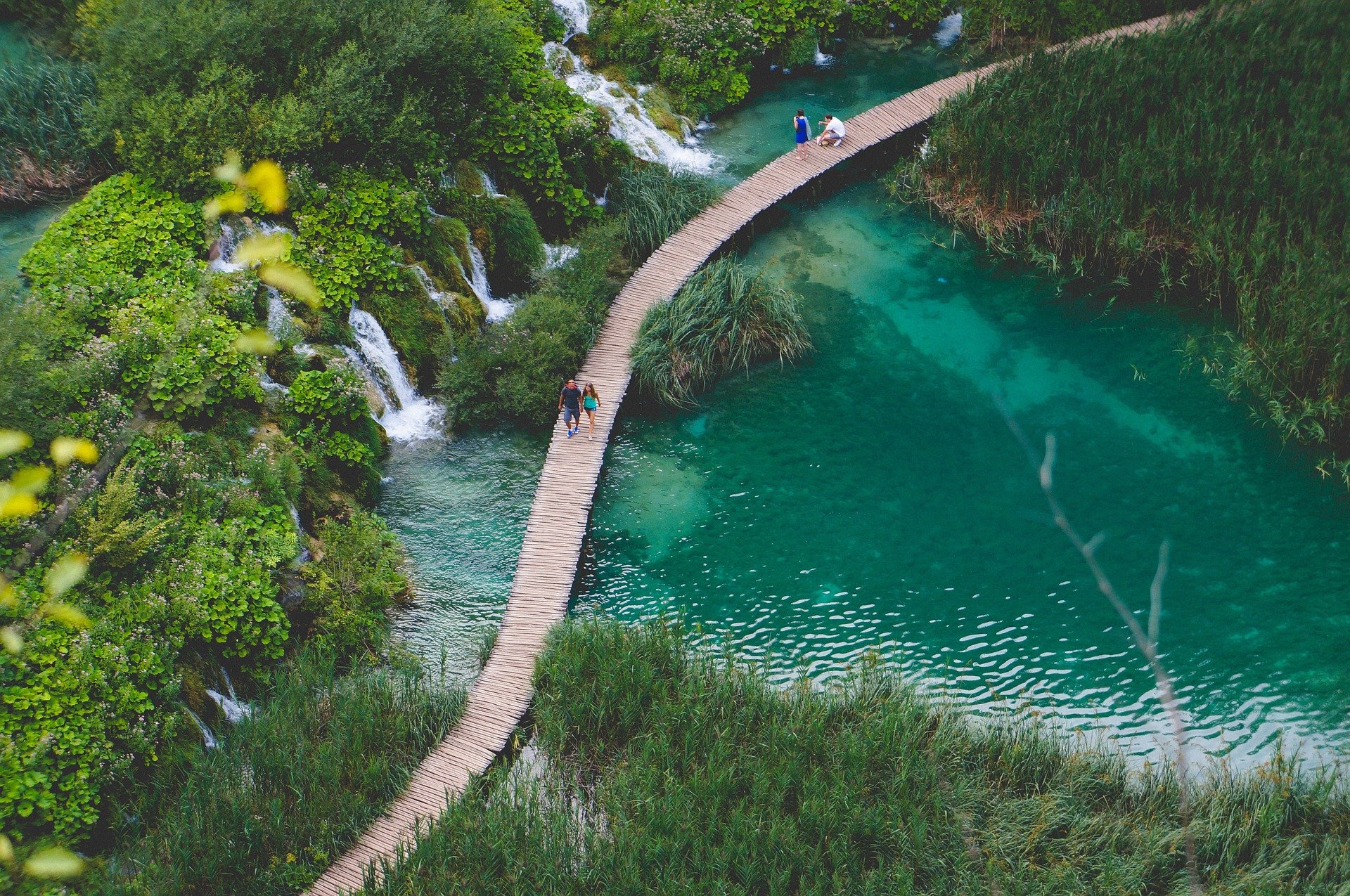 Nature and its protection. Croatia has not only two climate zones, but also vegetable. Coast and islands, i.e. the area of the so-called. sclerophyllous vegetation, they look most beautiful in spring. Plants develop quickly then, using the reserve of moisture contained in the soil and air. In summer, the vegetation in some places looks burned out - this does not change until autumn. The inland areas are the zone of Central European deciduous and mixed forests. Oak and hornbeam forests grow here, above beech and fir, and in the highest parts of the mountains – alpine and subalpine plants.
Nature and its protection. Croatia has not only two climate zones, but also vegetable. Coast and islands, i.e. the area of the so-called. sclerophyllous vegetation, they look most beautiful in spring. Plants develop quickly then, using the reserve of moisture contained in the soil and air. In summer, the vegetation in some places looks burned out - this does not change until autumn. The inland areas are the zone of Central European deciduous and mixed forests. Oak and hornbeam forests grow here, above beech and fir, and in the highest parts of the mountains – alpine and subalpine plants.
The area of the country was once covered with forests composed of holm oaks and noble laurels. Currently, they have been replaced by macchia - dense thickets of tall shrubs and small trees. Palm trees also grow along the coast and on the islands, cypress trees, cacti, edible chestnuts, fiji, almonds, olives, grenades, lemons, oranges, the vine. On some islands, however, there is so little water, that only dry-loving herbs and short shrubs can survive on them. The island of Hwar has become a famous center for the cultivation of lavender - the scent of its flowers, which when dry, sunny weather give off large amounts of essential oils, is for many people one of the most beautiful memories from Croatia.
Most of the animals living in Croatia are species typical of Europe, which, however, in many countries has been completely eradicated or extremely rare. This applies primarily to the brown bear and the lynx, from which the National Park Risnjak takes its name. The chamois survived in the highest mountain parts, and in the forests of all the land, deer live, deer, fallow deer and wild boars.
The village of Kutarevo in the Velebit Mountains became famous thanks to the project of a shelter for bears orphans by mothers. The little ones live here in conditions that resemble natural ones – in large fenced areas, where they themselves have to find food hidden by their caretakers. Thanks to this, they have a chance to learn how to get food on their own.
Wolves also appear in the vicinity of the Plitvice Lakes National Park. Numerous caves and grottos are inhabited by several dozen species of bats. The largest - molossians - have wings with a span of approx. 40 cm.
The world of birds is rich. The most famous are the scavenger griffon vultures – attraction of the island of Cres. Their wingspan may exceed 2,5 m, weight comes to 7 kg; They can spot carrion even from a distance of several kilometers. Large birds of prey are represented by the white-tailed eagle, imperial eagle, golden eagle, peregrine falcons, osprey. Pelicans live in the south of the country. Their competitors in hunting for fish are, among others. herons, ibis, cranes and flamingos.
Lizards often bask among the limestone rocks. They are generally minor, but sometimes you can spot a rare triple lizard, which reaches a length of approx. 40 cm. Reptiles are also represented by the Zigzag Viper and Aesculapian Snake.
He lives in the Adriatic 370 species of fish, m.in. sardines (inćun), mackerel (sorry), tuna (tunj) or a scorpion with venom spines on its back. Octopus inhabits the underwater rocks covered with clefts, clams, sponges, snails, north, lobsters and cuttlefish. Many of them can be seen in the oceanaria, m.in. in Dubrovnik, Puli or Poreć. People who bathe in the Adriatic often come into contact with sea urchins, whose spikes stick into the feet of careless bathing enthusiasts. Sometimes small sharks make their way to Croatian waters, and every few years, stray whales come here. Permanent inhabitants of the local waters are bottlenose dolphins, which is seen around the islands of Losinj and Cres. They can be seen from the ferry or during a sea tour by boat.
Eight national parks have been established in Croatia: Brijuni, Kornati , Krka, Mljet, Hellfire, Plitvice Lakes , Paddy field, Northern Velebit. It is also 10 nature parks and nature reserves - 32 forest (e.g.. island of Lokrum near Dubrovnik), 9 botanicals (e.g.. a stand of wild olives in the town of Lun on the island of Pag) and 16 ornithological (e.g.. part of the island of Krk, two on the island of Cres).